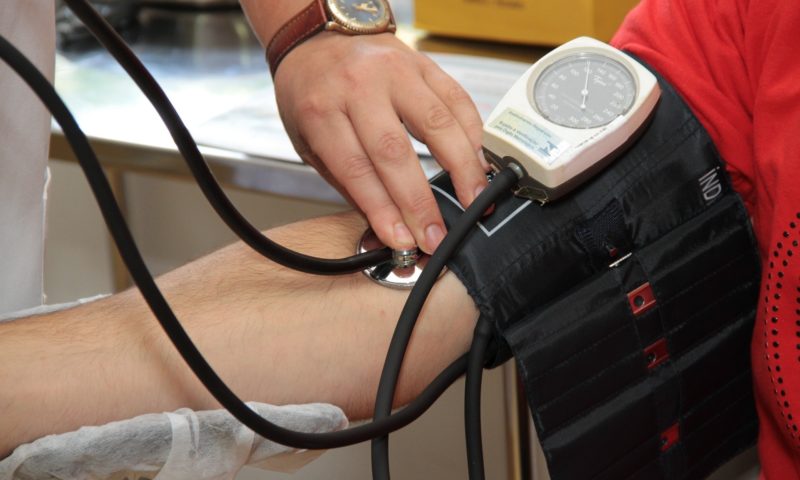High blood pressure is one of many conditions related to obesity and overweight. It’s also a very common condition. Based off of new guidelines published by the American College of Cardiology (ACC) and the American Heart Association (AHA) in 2017, 46 percent of people in the U.S. are affected by high blood pressure. What can we do to lower this number and improve our health?
Determining Blood Pressure
Knowing your blood pressure can give you an idea of your overall health. Examining your health as a big picture can also help manage your weight and implement healthier lifestyle changes.
Blood pressure is evaluated with the help of two numbers. The top number is referred to as your “systolic blood pressure” and reflects the pressure in your arteries when your heart is contracting. The bottom number is referred to as your “diastolic blood pressure” and reflects the pressure in your arteries when your heart is relaxed. Both numbers are equally important.
As stated previously, blood pressure guidelines changed in 2017. Below are some important ranges for you to consider if you want to evaluate your blood pressure and health risk:
- Normal Blood Pressure: Less than 120/80 mmHG
- Elevated Blood Pressure: 120 – 129 systolic with less than 80 diastolic
- Stage 1 Hypertension: Any pressure greater than 130 systolic or 80 diastolic
- Advanced Hypertension: Increases as the above numbers climb
Managing High Blood Pressure
If you’ve measured your blood pressure, determined that it’s high and want to implement healthier lifestyle changes, know that there is hope on the horizon and your efforts will pay off!
First and most importantly, if the number is regularly above 120/80, start a conversation with your healthcare provider. They can help you determine your risk and come up with a game plan to improve not only your blood pressure, but also your weight and overall health.
In addition to meeting with your healthcare provider and going to see them on a regular basis, consider these top 10 healthy lifestyle changes you can begin to incorporate:
- Evaluate your blood pressure at least once per year.
- Get an accurate reading (Don’t smoke, exercise or drink caffeine within 30 minutes of checking your blood pressure with trusted equipment).
- Make sure the cuffs at the clinic and at home are the right size (Cuffs that are too big or too small will produce inaccurate readings).
- Check your blood pressure at home.
- Look for a cause and consider everything from lifestyle to pre-existing health conditions.
- Lower your salt intake.
- Do what you can to lower your weight.
- Reduce your alcohol intake.
- Get active! Aim for at least 150 minutes of exercise per week.
- Make a plan with your healthcare provider and follow through.
Final Thoughts
Many people think that measuring blood pressure is something that can only be done at a healthcare provider’s office. This isn’t the case! Though you should see a healthcare provider regularly, you can also measure many of your vitals at home for more accuracy and greater consistency. The most important thing you can do is be an educated patient. Assess your health, ask questions and create a plan for improving your health. Have faith in the process!






